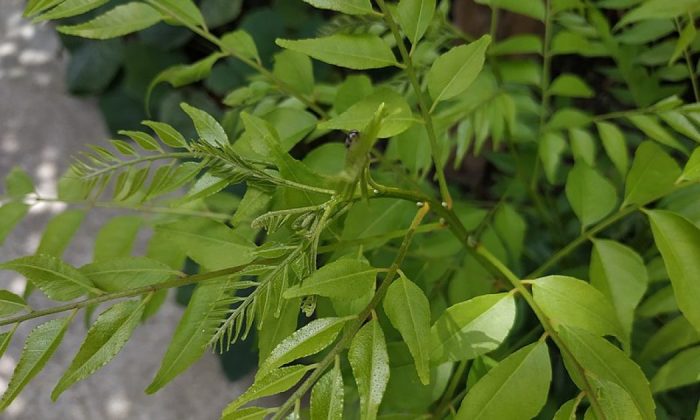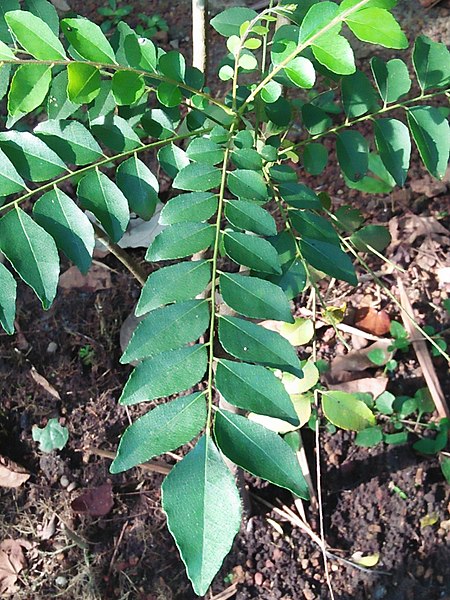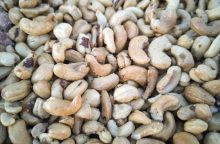Curry leaf as a great indoor plant?

Curry leaves actually come from an Indian tree called Murraya koenigii. They are little known in our corner of the world because they are mainly used fresh. When dried, they lose a large portion of aromatic and essential oils and strength.
Curry leaves are an important part of South and West Indian cuisine. They are used as the base of many dishes, just like onions and mustard seeds for example. You can compare the popularity of curry leaves in Indian cuisine to bay leaf in Europe.
What curry leaves can do for you?
Well, they taste great but also offer many health benefits, especially due to high content of iron and folic acid, which helps our body to absorb iron. Leaves also contain plenty of vitamins C and B, calcium, zinc and magnesium and of course the typical aromatic essential oils.
Curry leaves work as a great antioxidant and are especially good if you wish to cleanse or protect your liver.They also support proper functioning of pancreas and keep blood sugar levels in check. Leaves also help us to fight atherosclerosis and heart diseases. And lastly, curry leaves are known for their antiviral and antimicrobial properties as well as for their ability to “flush” excess of salt from our bodies.
Photo: commons.wikimedia.org
How to use curry leaves
Although Murraya koenigii leaves are mainly used fresh, they are also used in dried form to prepare tea. Unlike fresh leaves, dry leaves are available in stores. Tea from curry leaves is widely used for body detoxification purposes or if you are trying to get your diabetes under control.
Curry leaves are used as a mixture with other herbs or alone.If you have curry leaves, take two teaspoons of curry leaves and pour a cup of hot water over them. After ten minutes, strain and drink. Use 2-3 times a day.
Curry leaves as a houseplant
Do you want to indulge in the unique taste of fresh curry leaves? If so, you need togrow your own curry tree at home. From time to time you may get semi fresh curry leaves at an Asian market, but there is nothing like freshly plucked leaves.
You can get small plants of Murraya koenigii in special markets or you may get a small plant from companies dealing with exotic plants. Curry leaves need an airy, bright and warm place, but as usual a direct sunlight is not good. They will do much better on a window facing the east. You must also pay attention to the soil – it must not contain calcium. Murraya koenigii needs regular and abundant watering, preferably rainwater or at least boiled water.
In the summer, you can move the plant to your balcony.Naturally, it hates freezing temperatures and thrives when the temperature ranges from 20 to 30 °C. In winter, it can deal with cooler environment but the temperatures should not fall below 15 °C. Also limit watering during winter.
You should transplant Murraya koenigii every 4-5 years, younger plants every two years. You can also make a bonsai tree out of it, as it tolerates cutting and shaping very well. If you are lucky you may see it bloom in our climatic conditions, but you will rarely see fruit. When making a shaping cut, be very careful not to cut newly sprouting buds, but other than that there is no specific time for shaping so, you can do it when your time permits. Young plants on the other hand require pruning several times a year.
However, if you want to grow curry leaves for consumption, prune and shape only during the first years of the plant’s life.The plant should be as luscious and succulent as possible. Cut and use only the feathery and tasty leaves when you need them. Leaves are usually fried, because frying gives the dish a beautiful aroma and an interesting taste. All lovers of exotic cuisines will be jealous of you that you can use this exotic ingredient right at home.
Preview photo: commons.wikimedia.org

Gardening is my hobby, I have a lot of experience and I am happy to share it.









0 comments